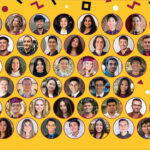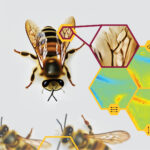
Industrial engineering students show how downtown Phoenix can be remade for shade
November 29, 2007
Shade is no trivial matter in the sun-drenched desert climate of Phoenix.
That’s why Phoenix Mayor Phil Gordon lauded the “bright young talent” of a group of Arizona State University engineering students who took on challenges to devise methods for increasing and optimizing shade cover in city’s urban core.
At a recent City Hall press conference, Gordon presented $1,000 prizes to each of two teams of graduate students in the Department of Industrial Engineering in ASU’s Ira A. Fulton School of Engineering for their shade solutions.
Entries in the competition to solve the shade planning and design questions were received from students at Arizona’s three state universities.
Sharing the prize for the best cost-efficient algorithm to provide shade was the team of doctoral students Ozgur Araz, Shanshan Wang and Liangjie Xue, and master’s program student Onur Senman.
The top prize for an algorithm and a computer software program that could be used by small businesses to provide adequate shade on their properties went to the ASU team of doctoral students Shrikant Jarugumilli, Rachel Johnson and Serhat Gul, and master’s program student Matthew Rogers.
The teams’ designs for how to use trees and shade structures to produce maximum “shade value” are to be incorporated into the city’s broader strategies for developing a more sustainable, comfortable and inviting downtown environment.
“It’s great to see what we have learned in school be used to change things for the better in real life,” says Wang.
“This was a great experience. It made tangible all of the engineering concepts I learned over the last year and a half,” Rogers says. “It’s inspiring to work on a project that potentially can be used to improve downtown Phoenix.”
Mayor Gordon was sold on the project by Eliana Hechter, who had served a brief internship in the mayor’s office in 2006 before beginning studies as a Rhodes Scholar at Oxford University in England, where she is pursing a Ph.D. in statistical genetics.
It was one of the first endeavors for the company Hechter recently founded called eBourbaki. (The name is derived from the pseudonym of a group of mathematicians who worked together in France beginning in the 1930’s to revise the foundations of modern mathematics.) She formed the company to organize competitions to apply mathematical modeling in seeking practical solutions to society’s sustainability challenges.
“People see math equations and they get frightened,” Hechter says. She started eBourbaki to help allay such phobia by demonstrating the value of math and science education in generating innovative solutions ”to solve real-world problems.”
Hechter viewed the shade engineering challenge as a perfect complement to the Downtown Phoenix Urban Form Project launched under Gordon’s leadership in 2006.
The idea drew support — including donations of prize money — from The Thunderbirds, the civic and charitable group that runs the popular annual FBR Open pro golf tournament, and from Honeywell corporation’s Honeywell Hometown Solutions community outreach program.
With Department of Industrial Engineering chair Ron Askin and professor John Fowler as project advisors, students worked on devising cost-efficient methods to distribute trees and structures throughout downtown Phoenix so that sidewalks and other public spaces are shaded for most of the daylight hours.
They designed a computer program that small business owners can use to determine where to plant trees on their properties to efficiently provide optimum shade.
Students proposed a “mixed integer programming model” as a guide to choosing the types of trees and geometrical planting patterns that would provide abundant shade.
After calculating the “shade factor” of various types of trees, they devised a computer algorithm for a coordinate system to determine where and how many trees to plant to achieve desired shading.
“I was impressed by the quality and sophistication of their solutions,” Hechter says. “They showed a lot of enthusiasm and ingenuity, and they did good research in a short amount of time.”
Given their busy schedules, Askin says, “It’s amazing what the students were able to accomplish in a one-week competition. They were able to research the necessary background information, translate the problem into a mathematical form, develop and test a solution method and document their results. We’re pleased to contribute to the sustainability efforts of the city of Phoenix and look forward to helping translate these results into practice.”
The teams presented their solutions to Phoenix planning department officials.
Principal city planner Dean Brennan said the students’ proposals would be worked into the Connected Oasis segment of Downtown Phoenix Urban Form Project plan.
The models can be used by both private developers and the city to determine whether the shade requirements for Phoenix’s downtown plan are being meet, Brennan says.
“Providing shade is critical to the long-term success of downtown, and preparing development standards has been a primary focus of the Urban Form Project,” he says. “The student math models are essential for ensuring that the development standards are being satisfied.”
The engineering students will be working with city staff to put a user-friendly interface in place that will allow anyone to access and use the shade models.
Users will be able to log on to the city of Phoenix web site, provide the basic site information and receive a printout of a site plan specifying the type, location, size and amount of shade that needs to be provided under city guidelines.


































